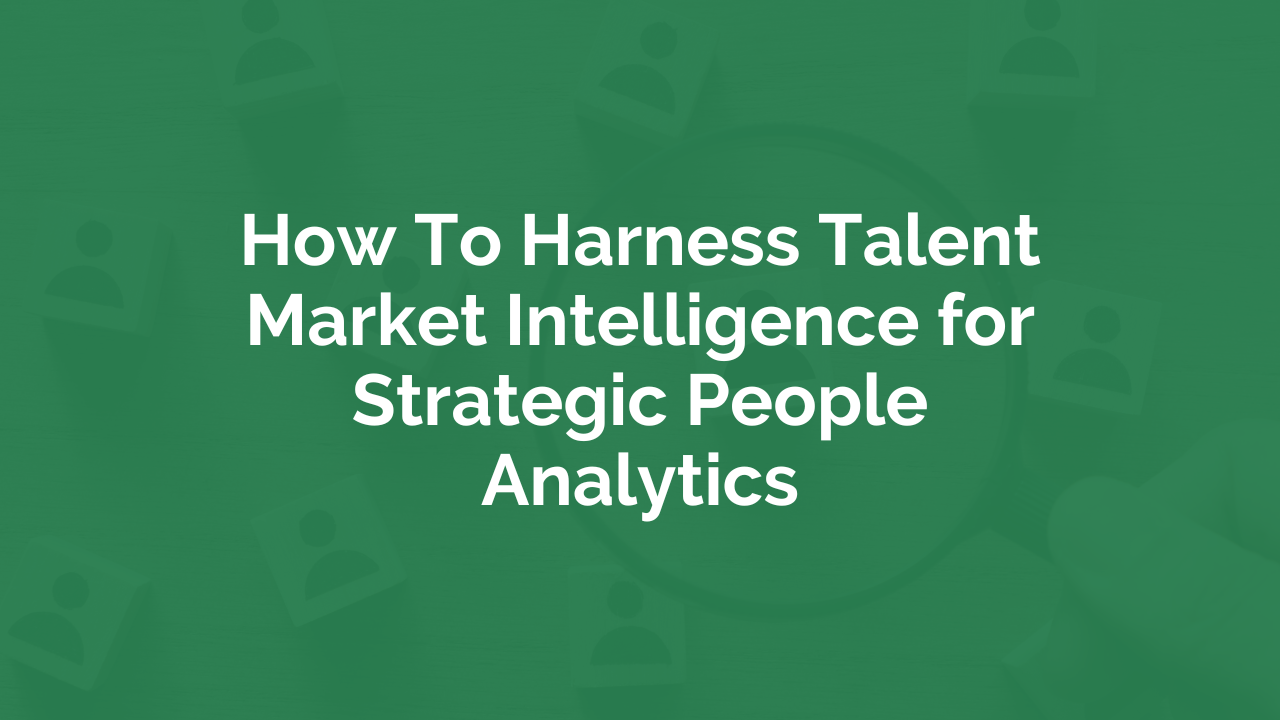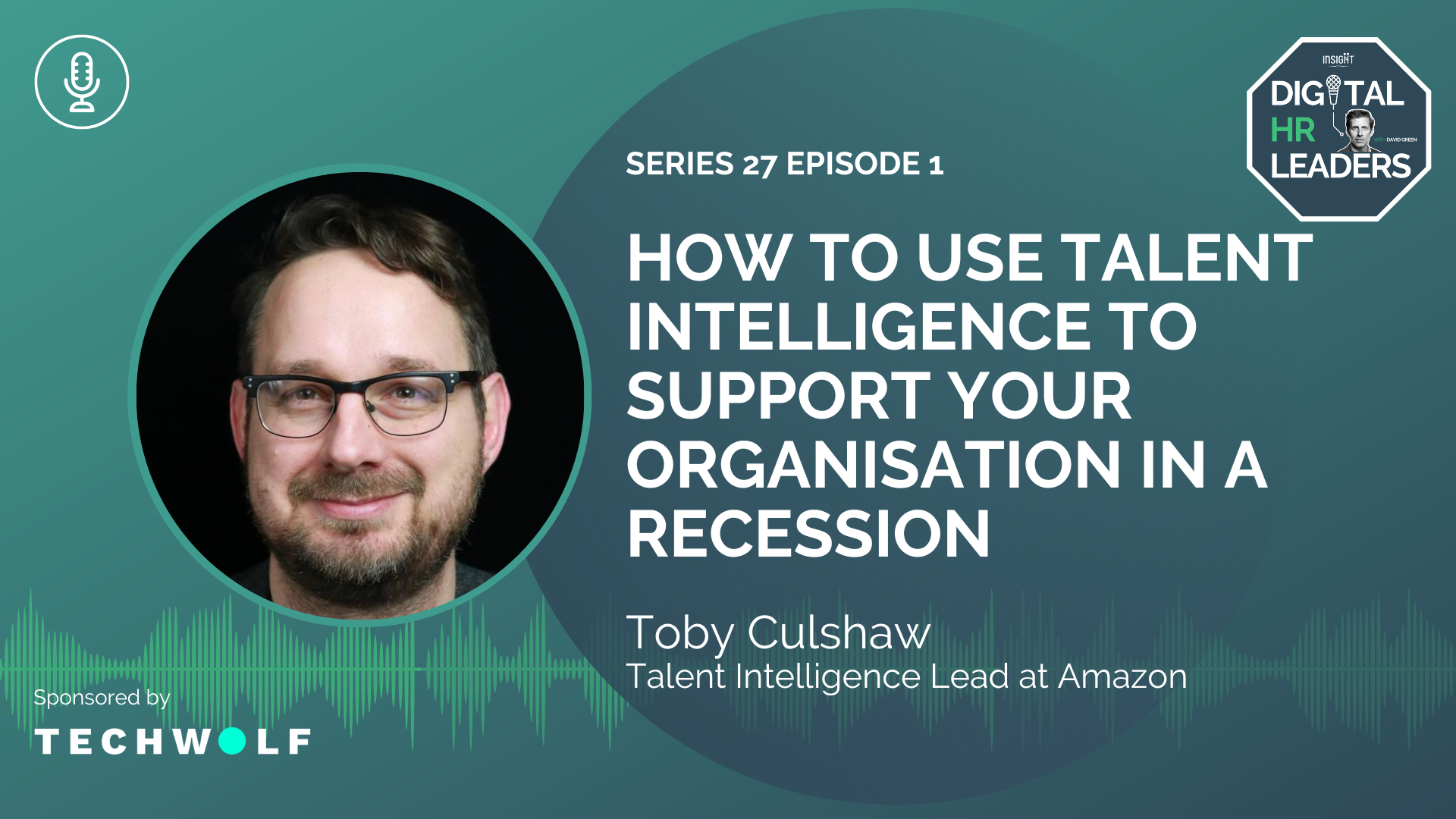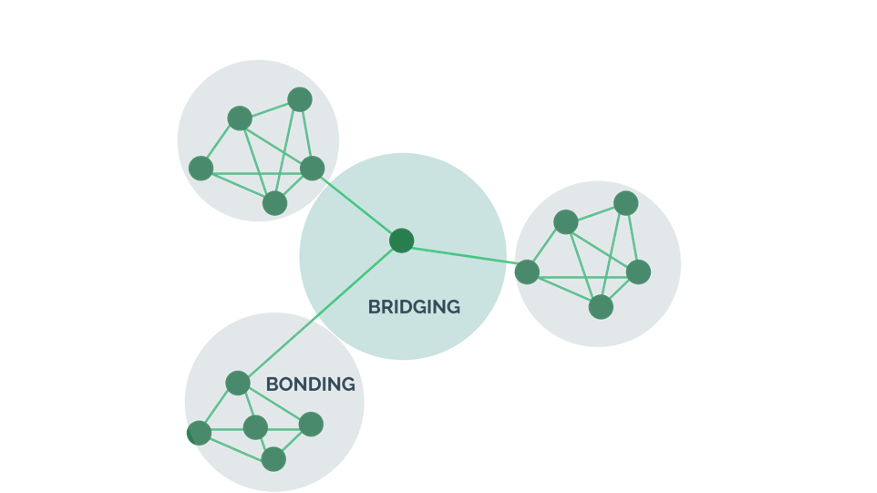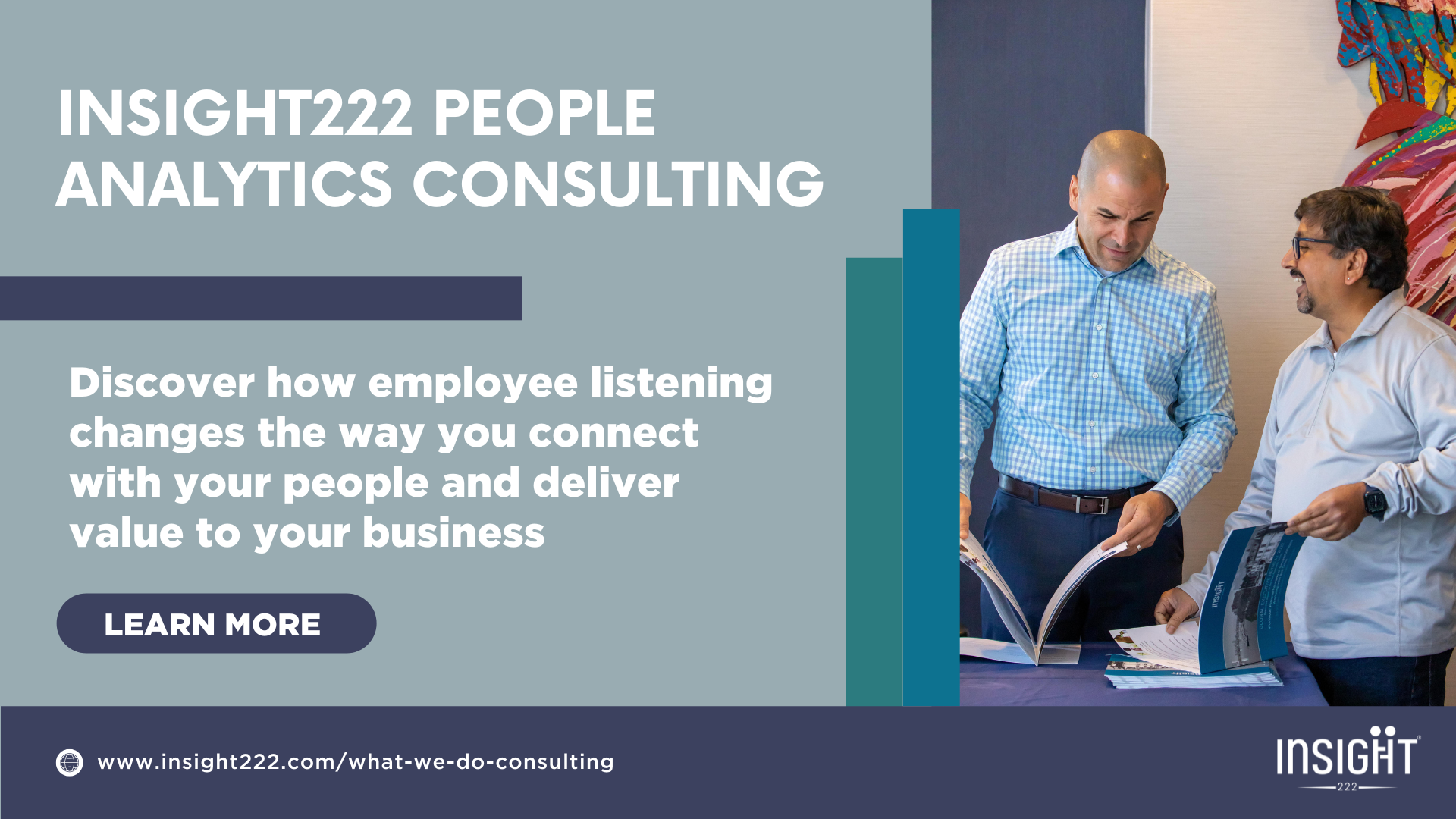How To Harness Talent Market Intelligence for Strategic People Analytics
Talent intelligence is a relatively new field that has grown in importance over the past few years. What was once a function limited to talent acquisition professionals is now being recognised as an essential tool for organisations looking to gain a competitive edge in the labour market.
Gathering data-driven insights about the external labour market, talent trends, and competitor analysis, talent intelligence data can inform strategic workforce planning, talent acquisition strategies, and employee retention initiatives. These insights are crucial for analysing data and understanding quantitative data to make informed business priorities.
Evolution of Talent Intelligence and the Importance of External Data in Strategic Decision-Making
However, as talent intelligence evangelist and Global Head of Talent Intelligence at Amazon, Toby Culshaw highlights on the Digital HR Leaders podcast modern talent intelligence functions go beyond looking at the external market and competitor analysis:
"...it's all around using people data, in whatever guise that is, merge external people data, merging it with the internal and then looking to drive business decisions."
More than relying on internal data is required in this fast-paced and competitive business landscape. Organisations need to look beyond their own walls to understand the larger context in which they operate. This is why integrating labour and talent market intelligence is crucial to an effective people analytics strategy, especially when it comes to strategic planning and understanding company culture.
The Shift to Skills-Driven Talent Marketplaces
The future is skills-driven, with progressive organisations no longer relying on traditional job roles but on developing internal talent marketplaces where both their internal and external workers can benefit from access to new skills development through the application of flexible job roles, assignments and projects within the organisation. This approach should effectively align with the HR department and its task of addressing skills gaps, but must also aligning with business goals.
But while we know that people analytics are the drivers of this shift, looking at the internal people data to identify the skills of the workforce, as Toby Culshaw states:
"is quite hard. Ironically, it's quite often easier to look using external platforms back into your own organisation, so understand what skills you have potentially within that organisation because those skills aren't being captured within your HCM; they're not being captured within your learning management system, etc. So, using TI to use the external sources to look back into your own organisation, to look at that whole talent marketplace and skills, is really important."
Also, by undergoing talent market and competitor analysis and looking at what skills are in demand, whom your competitors are hiring, and where people with those skills are located, you can gain valuable insights into the external market and position yourself to become more competitive.
How to Harness Market Intelligence for Inclusive and Strategic Talent Acquisition
Talent acquisition isn't just confined to acquiring candidates with the right skills; it is about understanding the larger market and trends to be able to set up effective recruitment channels. This is where talent market analysis can be helpful and where a robust talent strategy comes into play.
For instance, you can use talent and labour market intelligence to discover candidates' preferred digital channels to engage with companies and their job postings. It can also be used to better understand the language certain demographics best respond to when applying for roles - which, of course, is vital for creating more inclusive talent attraction strategies.
Even if you are looking to set up a new site, with the help of external data-driven insights, you can identify which locations have the highest density of qualified candidates, what salaries, benefits, and perks are offered to attract the best talent in the area and build a stellar talent acquisition strategy.
Leveraging External Insights for Effective Talent Retention
Regarding employee retention, in people analytics, we look at internal data trends such as employee engagement, turnover rates, employee sentiment and organisational network analysis to gauge what employee groups are most likely to leave. But this is only half the picture. We also need to integrate external talent market intelligence into the equation, ensuring that talent management aligns with the broader business strategy.
For instance, by constantly undergoing competitor analysis, you can identify the salaries and benefits competitors offer to stay competitive. By looking at competitor movements, such as changes to their organisation or hiring velocity, you can understand where you can be at risk and maybe put more sanctions in place to retain talent.
As Toby confirms:
"That whole early-warning threat detection is really important. You can really see, are companies pivoting; are they launching into new locations?
The business as usual, we don't care about. If certain competitors are hiring 20,000 software engineers a year, you don't care because they always are. If they're opening new sites, if they're pivoting skillsets, are they shifting from an on-prem sales model to a cloud sales model? Well, that's going to fundamentally change the sales people they have. Are they moving from product sales to solution sales? Okay, that's going to fundamentally change."
Therefore, having this intelligence in your arsenal will help you better understand the dynamics of the labour market and put initiatives in place that will prevent your top talent from jumping ship.
Integrating Talent Market Intelligence for Success
Integrating labour and talent market intelligence into people analytics practices requires a strategic approach that involves investing in specialised analytics capabilities and a data-driven culture.
This means investing in the right technology, upskilling internal resources to use them efficiently, and, most importantly, ensuring that these data-driven insights and trends are part of your people analytics strategies.
The importance of leveraging data-driven insights about the labour market, talent trends, and competitor analysis can't be overstated. When you have the right tools and resources to analyse this external data, your organisation will be better equipped to develop influential people analytics strategies that help inform strategic workforce planning, talent acquisition strategies, and employee retention initiatives.
So, for any organisation looking to optimise its people analytics practices, incorporating labour and talent market intelligence is a must. Doing so will help you stay competitive in the external job market and equip your organisation with the insights it needs to inform successful people analytics strategies.
It's no longer enough to rely on internal human resources data insights– you need an integrated approach that combines internal and external data to understand the dynamics of the labour market.
Discover How Employee Listening Changes the Way You Connect With Your People and Deliver Value to Your Business
You may have the initiative for an employee listening strategy, but you’re not sure where to begin. If that's the case, book a free consultation with one of our experts for our Consulting Discover service. We help you understand how employee listening can accelerate your people strategy. Together, we will explore what and who you should be listening to, why listening is important and what your goals are. We will build a compelling story and vision for employee listening and connect this to the your mission, your team, and your technology. This typically delivered over a 12-week period and looks to deliver tangible business value to your organisation.





